Hey guys, I’m back  Today’s post is about my visit to Bodh Gaya, the most important and sacred Buddhist pilgrimage centre in the world. Lord Buddha, the founder of Buddhism, is said to have achieved spiritual enlightenment here some 2500 years ago.
Today’s post is about my visit to Bodh Gaya, the most important and sacred Buddhist pilgrimage centre in the world. Lord Buddha, the founder of Buddhism, is said to have achieved spiritual enlightenment here some 2500 years ago.
Bodh Gaya is located in the Gaya district of the North Indian state of Bihar. Buddhism as a religion was born and developed in Bihar through Lord Buddha, formerly Prince Siddharth of the Sakya kingdom (in Nepal) in the foothills of the Himalayas. “Bihar” derived its name from “Vihar” meaning monasteries which it had in abundance. Centuries after Buddha’s passing away, the Indian Emperor Ashoka (304-232 BC), whose kingdom extended from Afghanistan to Burma (now Myanmar) and who later renounced war and converted to Buddhism, contributed immensely towards the growth and spread of Buddhism. He built numerous temples and monasteries in the Indian sub-continent, many of which still exist drawing pilgrims from all over the world.
Other than the Buddhist sites, the state is not a major tourism destination because it has a reputation of being a troubled state and an unsafe place for women to travel alone. Strictly speaking, it means no wandering on roads or staying out after dusk. So, this is the state that I visited last October. I flew with IndiGo Airlines from Mumbai to Ranchi, the state capital of neighbouring Jharkhand.
While the 214-km bus journey from Ranchi to Gaya takes six hours during day-time, at night it takes only four hours. From Gaya, there are buses and auto-rickshaws going to Bodh Gaya, which is 16 km away. Almost all Ranchi-Gaya luxury buses leave around 10pm-11pm. And they reach Gaya somewhere between 2am and 3am. Bihar roads are unsafe to travel at night. Moreover, it’s risky – and unadvisable – to arrive in Gaya at that hour. So after a night’s stay in Ranchi, I took the only available morning bus, a standard one with an economical 160-rupee ticket. While booking my bus ticket the previous night, I was advised to get off at Domohun village which is just 2 km from Bodh Gaya. From Domohun, it’s at a 5 minutes’ drive by share auto-rickshaw which costs 5 rupees per person. I need to reach Bodh Gaya before it gets dark. In winter, dusk falls early at 5:30pm. Almost all online articles on Bihar warn against travelling after dusk on Bihar roads, especially the Gaya-Bodh Gaya road, which has witnessed rampant robberies in the past.
Interesting, right? Read on  …
…
Wednesday, 28 October 2015
My 9:30am bus from Ranchi reaches the dusty village of Domohun village around 4:00 pm. There are plenty of shared auto-rickshaws. A welcome board greets visitors to Bodh Gaya, which is hardly five minutes away. It’s an altogether different environment, more like a Buddhist Wonderland. Fortunately, I’m armed with a map of this unique temple town, home to more than twenty Buddhist temples, monasteries and institutes belonging to Asian countries with Buddhist traditions like Bhutan, Japan, China, Tibet, Myanmar, Nepal, Sri Lanka, Thailand, Cambodia, etc. Each with its own architectural style. All are within walking distance of the Mahabodhi Temple, which is at the centre of this small town. Many are engaged in social services activities including free education and medical services for the local population. So this place is an exceptional example of better life and comfort in Bihar which is one of the poorest and most troubled states in India. It ranks at the bottom of Indian states in terms of wealth, literacy, road and transport conditions, power, etc.
I’ve come to Bodh Gaya at the right time. A few weeks later till March, the town will be bustling with Tibetans from McLeod Ganj (home to the official residence of the Dalai Lama and the Tibetan government in exile) in the state of Himachal Pradesh. During winter, most of them come down here to escape the chilly weather up north. There are fewer tourists during the uncomfortably hot summer months of May and June as well as the rainy season, which goes on till the end of September. High season is December to January, which is also the time when the Dalai Lama visits the place to attend the Nyingma Monlam Chenmo festival for world peace.
I’ve booked a room for two nights at the Root Institute, a semi-monastic meditation retreat centre for spiritual practice and the study of Tibetan Buddhism. Their office closes at 4:30pm. Just in case I get delayed, a girl at the office has told me that I can collect my room key from the watchman at the entrance gate. I reach the place bang on time, at 4:30pm. The girl gives me a quick tour of the place before showing me to my room. My single room with attached bathroom, at 1000 rupees, has no television, (because it’s a meditation retreat centre) but is equipped with a mosquito net. It seems there are plenty of mosquitoes around. Booohooo… Mosquitoes, bed bugs and their blood-sucking likes just go crazy for me. They bite me before anyone else! So I’ve got to watch out for them after dusk or else I may end up with Malaria or worse. A few minutes later, I see a big lizard making a quick dash for the large, gaping hole around the ceiling fan. The girl tells me that killing or causing injury to insects is prohibited by the institute. So I’ve to share my room with the lizard??? Ten minutes later, after the girl’s gone, I see two more of the crawling pests wandering on the wall. These are quickly driven out by a cleaning woman who happens to be around. It’s dusk by now so I climb down for a walk. It’s a quiet and peaceful place. The brightly painted statues, the meditation hall and the large prayer wheel are decorated with colourful lights.
Small memorial stupas…
Prayer wheels (a common feature of most Tibetan Buddhist temples and monasteries) are either engraved with words or filled with prayers. When the wheels are turned, the prayers are supposedly “let out” into the world, where their power is magnified.
The Institute’s large prayer wheel…
I meet two of the Institute’s dogs, a German Shepherd and a Pomeranian. So quiet and peaceful… not a bark, nor a sound out of them! The Pom sniffs my foot for a while, and then, trots away with its nose up in the air.
The weather has been cold and pleasant throughout the day and by nightfall, it’s become slightly cold and breezy. And someone tells me that till yesterday it was hot and sunny. The cold makes me more hungry. In the entire day, my food intake has been two slices of fruit bread and a pack of potato chips. So I’ve been looking forward to 6pm, the hour at which dinner is served. Meals are vegetarian. I’m expecting green veggies like the luscious ones that I have seen at roadside vegetable markets. Mmmmm….
There are plenty of international volunteers at the Institute from North & South America, Europe, Asia and Australia. I get to meet a few of them in the dining room. To my utter disappointment, dinner turns out to be a single piece of samosa with sauce and papaya lassi (a yogurt-like drink), which I mistake for some kind of sauce. Hmmm…and I have to pay 150 bucks for this. And then, I discover that diners have to wash their own plates. There’s a step-by-step system for doing so. After dumping any remaining food into a bin, the utensils have to be rinsed in the first water container. Then, they are to be washed with liquid soap provided in the sink before rinsing in the second water container. The cleaned items are to be soaked in the third water container which contains Dettol disinfectant. They are to be soaked for 20 seconds and then rinsed off in the fourth water container before placing on the rack to drip dry. A kitchen guy is washing two plates so he tells me to leave my plate. In my room, I tuck in a few biscuits to relieve my hunger. With nothing else to do, I go off to bed at 7:30pm.
The next morning, I wake up at 5am. Dawn happens half an hour later, and I go down for a walk. It’s cold yet refreshing in the serene atmosphere broken only by the chirping of birds. Mr T, a Thai volunteer, invites me for tea in the dining room where we sit down to chat while waiting for breakfast. Bored of his retired life, the elderly Thai has been working as a volunteer at the Institute for the past six months. It’s a mixed population here, mostly international. Young and old, men and women, boys and girls. Some come as volunteers, some to gain knowledge on Buddhist teachings, practice prayer and meditation.
Breakfast is served at 7:30am. Muesli, litti (Bihari bread) with jam and peanut butter, and a slice of papaya, boiled egg, samosa (most probably leftovers from last night). After breakfast, I leave for the Mahabodhi Temple. It’s at a walking distance of 30 minutes. I receive plenty of Good Mornings on the way, which I return with a friendly smile. Some are intrusively friendly. One guy riding on a motorcycle on the wrong side of the road, first greets me and then goes “Which country are you from?” “India,” I quickly reply, thinking that it will stop him from pestering me. Instead, he laughs. “No, no…you look like a European.” “Aagey chaliye (Move on),” I tell him in Hindi. He rides off, then stops across the road as his motorcycle develops problems. I chuckle silently when I see him trying to restart the bike. Further ahead, an English-speaking wannabe guide tries in vain to offer me a tour of the town.
A few Buddhist temples stand alongside the road. The architectural style of the Thai Temple is captivating and very inviting, but first I’m going to visit the Mahabodhi Temple. Nearing the temple, the road is lined with souvenir shops and stalls selling touristy stuff. There are cycle-rickshaws, tangas (horse carts) and these cute battery-powered e-rickshaws…
At the entrance of the temple premises, there’s a cloak room, shoe stand and locker service for mobile phones. Cameras are allowed inside for a fee: 100 rupees for hand camera and 300 rupees for video cameras. I buy my ticket and enter the sprawling complex.
Being an international holy site, security arrangements are in place with check posts to screen visitors. After a few metres of walking, the spires of the temple rise up before me.
Soon, I’m facing the 50m pyramidal spire of the ornate temple…
Emperor Ashoka is considered as the original founder of this temple. He visited Bodh Gaya and built a temple which got destroyed over the years. The present temple was built somewhere in the 6th century. It was looked after by a community of Sri Lankan monks till the 11th century before its destruction by invading Muslims. The temple fell into ruin and the sacred site was “lost” for centuries. The Sinhalese (Sri Lankans) had maintained the temple for 900 years during the time it functioned as a centre of Buddhism. The Burmese attempted to take over this role after the temple between the 13th and 19th centuries. In 1877, the last Burmese king sent a mission to repair the temple and build a monastery. By then, the temple was widely recognized for its enormous history and architectural significance. The British colonial government offered advice to the Burmese mission on the restoration work. Then, the Anglo-Burmese war broke out and the mission had to leave. So the British finished the work themselves. The famous British archaeologist, Sir Alexander Cunningham, was involved in the restoration process. The physical structure of the temple was restored although it didn’t match with the structure of the original temple. Moreover, some of the choicest Buddha statues, stupas and other antiquities were shipped off to museums abroad. In 1891, the Sri Lankan Buddhist leader Anagarika Dharmapa founded the Mahabodhi Society and started a campaign to return control of the temple to Buddhists. In 2002, UNESCO declared Bodh Gaya a World Heritage Site.
The temple rises up a few stories, with intricate carvings all the way to the top. The sacred precincts spread out below…
Yours truly against the backdrop of the holiest Buddhist place in the world…
Watch my video: Mahabodhi Temple
Watch my video: Close view of the Mahabodhi Temple
Watch my video: View of the Mahabodhi Temple
A maroon-robed Tibetan monk…
Proceeding towards the temple, on the left there’s a large bronze bell. The inscription on the bell states that it was cast by King Mindon Min of Burma and brought to Bodh Gaya by the special mission he sent in 1877 for the temple’s restoration work.
I’m now standing in front of the great Mahabodhi Temple, the most sacred temple in the Buddhist world. Passing through a small chamber, I enter the inner sanctum which houses the main shrine, also called “the Diamond Throne”. It is said that the Buddha attained enlightenment on the full moon night in 527 BC at this very place, behind which stood the original Bodhi Tree.
The more than 2m-high gilded image of the seated Buddha made of black stone dates to the 10th century…
The Buddha is seated on a patterned cushion instead of the usual lotus with his right hand touching the earth, the posture in which he accomplished the supreme enlightenment.
During the restoration work carried out by the British, an earlier smaller shrine dating to 160 AD was discovered. It was made up of gold, precious and semi-precious stones. Beneath that they found another shrine, made of sandstone, which was much earlier. This was considered to be the original seat, part of the original temple built by Ashoka in the 2nd century BC. The original statue placed on the seat was called the Mahabodhi Image, and was the most famous statue in the ancient world. The famous Chinese traveller, Hiuen Tsang visited this temple in the 7th century, and described the statue in details. It’s the same statue which was carried away by Muslim invaders in the 11th century. The present statue was found in one of the ancient buildings near the temple complex and was placed here by British archaeologist Joseph Beglar (who supervised the restoration work), at the request of Sir Alexander Cunnigham.
The temple courtyard has commemorative stupas and structures of all sizes built over the long period of years. Parts of the ancient stone railings dating to 100 BC still survive among the replicas surrounding the temple. The rest are kept for display in the Archaeological Museum near the main road. One side of the temple has a long row of brass prayer wheels. There are plenty of international pilgrims and tourists. All around this place, I see monks and nuns clad in maroon, saffron and yellow robes doing prostrations or simply chanting and meditating. A large number of western and traditionally-clad pilgrims are doing the same too.
Lost in my musings, I’ve completely forgotten about the Bodhi Tree. It’s only when my attention is drawn towards a crowded place and I walk towards it that I realize that their attention is focused on a tree. An international team of cameramen is filming the Bodhi Tree.
Watch my video: Bodhi Tree
Everyone is quietly watching the scene. But I get one of the team members to take my photo against the backdrop of the sacred tree…
In hushed tones, another team member tells me that they are from the National Geographic channel. After they leave, I’m able to take a closer view of the tree.
Also known as pippala tree (Botanical name: Ficus religiosa or sacred fig) or peepal tree, the Bodhi Tree is a species of fig native to the Indian subcontinent. The original tree died or was destroyed. Several later trees met the same fate. The present Bodhi Tree, said to be a descendent of the original one, was planted in the 19th century during the restoration work carried out by the British. The original tree grew directly behind the main shrine but was replanted in its present position when the Mahabodhi Temple was built.
At its foot is the oldest object to be seen at Bodh Gaya – a large slab of stone on which the Buddha is supposed to have sat in meditation gazing east, under the Bodhi tree. This stone could be the original seat inside the main shrine.
Watch my video: The Bodhi Tree
I leave the temple side and climb up the stairs to reach the main path in the temple complex. Further ahead, there’s a Hindu temple of Lord Jagannath on one side while another leads to a shopping market.
After the Mahabodhi Temple, it’s time to go international temple-hopping! To discover different Asian Buddhist cultures and their temple architecture. The Chinese temple is the nearest one down the road. At its entrance stand a pair of lion sculptures…
Next to the Chinese temple is the Tenzing Tibetan Temple…
It has a large stupa on one side of the temple…
I skip the Bangladesh Monastery to turn towards the road to the left. Walking further, I reach the Royal Bhutanese Temple & Monastery…
It has gloriously colourful and intricate frescoes …
The Indosan Nipponji Japanese Temple is further down the road…
This simple but lovely Zen temple has a free school for local kids. I can hear the teaching lessons going on in the classrooms. The temple also provides free food and medical services. The garden is well-maintained. At one corner there’s a giant bell which is sounded three times a day to call people for Zen meditation.
I start out for the next temple further down the road. It’s the Tibetan Karma Temple…
Next to it is the second Japanese temple – the Daijokyo Buddhist Temple…
At the end of the road is the Giant Buddha statue…
A wide tree-lined path leads to this stunning 80-feet stone statue of Buddha, commissioned and made by Japanese Buddhists. It was consecrated by the Dalai Lama in 1989. The artistry and craftsmanship of the sculpture is very impressive…
A walk ahead leads to the Cambodian Temple which is closed …
There are a couple of temples and monasteries to be covered, but it’s nearing 12 noon. That’s lunch-time at the Institute. So I take a cycle-rickshaw back to the Institute…
At the Institute, rooms are cleaned only when guests check out. But I want my room to be cleaned right away so the kind office manager agrees to send the cleaning woman, even while the girl of the previous day insists that it’s not as per rule.
Lunch is rice, dal, paratha, mixed vegetables, paneer and vegetable, tomato-cucumber salad and papaya lassi (probably from last night). I serve myself a bit of it all except for paratha and paneer. Seated on the bench, I suddenly feel a soft punch on my butt. I turn around just in time to see the German Shepherd’s nose moving away. The naughty dog quickly goes to the side of a monk seated on another bench. Grrrrrrr!!! A minute later, I turn around to check if the dog is still there. It’s nicely sitting a metre behind me! Are you ogling at my butt? Grrrrrrr…
After lunch, I start out for the temple again because in the morning I didn’t visit the Muchlinda Tank located in its vicinity. I proceed on foot. A cycle-rickshaw driver greets me with a “Good Afternoon. Namaste”. And then he goes, “Morning walking, afternoon walking.” Haha, he’s one of those “Good Morning. Need a cycle?” drivers of today morning.
Walking down the road, I reach the beautiful Wat Thai temple built by the King of Thailand in the 1950s. At the gate, a guy asks me whether I want to visit the temple. Mistaking him for a guide, I ignore him. I get some lovely pictures of the fabulous temple and its amazing environs.
The beautiful altar…
Watch my video: Inside the Thai Temple
The sound of visitors makes me realize that the main entrance of the temple is through another gate. They are probably wondering how I got myself near the altar while they get to watch it from the visitor’s end, at a distance. I’ve entered through the side entrance, not meant for visitors. Well, the guy mopping the stairs didn’t say anything when I walked in. So it doesn’t matter.
The side entrance of the temple…
The front side of the temple…
Back side of the temple…
Well-manicured gardens…
There’s a black dog who follows me as I walk, sniffing my foot whenever I stop. Thankfully, on my telling a friendly Thai volunteer calls him to her side.
There’s a small restaurant as well as a coffee-cum-souvenir shop with free WiFi in the premises. Visitors are welcome to a free cup of coffee at this café…
A Thai girl offers to make me a cup of coffee at the self-service counter. So sweet! She speaks only Thai. So also the young fellow manning the souvenirs counter. The coffee is delicious and the ambience is great. I drop in two tenners in the donation box for my coffee. Within the complex, everything is written in Thai and the volunteers who are all Thais speak little or no English. It’s difficult finding a washroom. So I show my little finger to a guy who immediately asks “Toilet?” and points the direction. Everything is so clean and tidy in this beautiful complex. Seeing a signboard offering Thai massage, I hurry to make enquiries. The masseuse tells me in broken English that all appointment slots are fully booked for today. Damn!
Well, at least I can have authentic Thai food at the restaurant. A local helper at the place tells me that the chef has gone to the temple. She’s supposed to return anytime soon. So I decide to return a little later.
On the way to the Mahabodhi Temple, I stop a local guy to enquire about the town bus stand in case there’s a bus leaving for Ranchi tomorrow. He says that there are no buses for Ranchi from here. I’ll have to take an auto-rickshaw to the Byepass road and from there another to Mahanpur Bus Stand in Gaya. Alternately, he suggests that I hire a tourist car which would be a safer option to travel to Ranchi. No way! An Indigo tourist car would cost me 2500 rupees whereas a bus ticket would come to somewhere around 150 rupees. And bus journeys with locals are interesting.
At the Mahabodhi Temple, I pay the camera fee of 100 rupees again. I spend a brief time inside the temple complex just to take a look at the Mucalinda Tank, also called Lotus Tank, which is located on one side of the temple. It was excavated while making bricks for the temple and other buildings. A statue of the Buddha sheltered by the snake Mucalinda is sitting in its midst.
Watch my video: Mucalinda Tank
A little later, I realize that I have mistaken it for the Mucalinda Tank known for its association with the Buddha, which is located a few kilometres away in the village of Muchalin.
Meditation Park for those seeking complete solitude…
View of the Mahabodhi Temple on my way out…
Exiting the temple complex, I take the road to the right which ends at the Vien Giac Institute, which looks more like a Vietnamese temple. Like the Root Institute, it also provides accommodation facilities, but the former is popular with travellers for its quiet and peaceful location.
I return to the main road and to the Thai Temple complex. The chef hasn’t returned yet. Anyway, it’s only 3:00pm. My last meal, though light, was at 12:30pm. I call up the Institute to cancel my dinner and breakfast. Half an hour later, three women walk with warm smiles on their faces. One of them is the chef who doesn’t speak English, but the other two speak a little of it. One of them tells me that they have seen me at the temple in the morning. Haha, I have an attractive disposition…
Knowing that Thai vegetarian cuisine is absolutely amazing, I choose vegetarian Pad Thai, a rice noodle dish. When it arrives with a small bowl of soup, I hungrily gorge on it.
The variety of yummy Thai veggies is delightful. I quickly finish off the large serving of noodles, much to the delight of the women. They have brownies too. So I pick two of them for tomorrow and leave. I have to settle my bill at the Root Institute before the office closes at 4:30pm because I’m going to check out early at 7:30am before the office opens. So I return to the Institute by a cute and colourful e-rickshaw.
I pay the accommodation bill and voluntarily put in a tenner into each of their 4 or 5 welfare fund boxes. The Pom is hanging around the office. The girl tells me that the dogs have Buddhist names. To my surprise, she tells me that the Pom is a male and the German Shepherd, a female. Really??? I thought it was the opposite! Not that I noticed them both so closely to find that out. To explain my surprise, I share the big dog’s naughty antics with her.
I spend some time in the common balcony…
Dusk falls and the mosquito attack begins. I retire to my room. A few minutes later, the lights go off. I’m aghast. I’m very sure that with the fan off, the big lizard would come out of the hole. In the dark, I tap my feet noisily not wanting the lizard to come near me. Just as I guessed, I find the lizard on the wall when the power returns after a few minutes. I run outside for help and see a guy climbing up the stairs. I call him over but he turns out to be a newly arrived guest. He sees the lizard and tells me that I should get my room changed. Yeah, you think this is a hotel? The office is closed. I tell him to drive out the pest instead. He suggests my calling one of the staff. Maybe, he’s scared of the lizard. Irritated, I voice my thought aloud. No, he says. As if he’s going to admit it! He says he needs a rod for it. I show him the mop in the bathroom but he says it won’t do. He goes out to call for help. A little later one of the kitchen staff who had washed my dinner utensils last night passes by. I call him over to show him the lizard. “Kitna mota hain woh,” (He’s so fat) I complain. Oops, bad Hindi grammar! Apt to describe the short-statured guest but not the lizard. The former happens to be around and tells the other guy “Bahut badi chipkali hain.” (It’s a big lizard) Yeah, whatever.
The two leave. The staff member returns with a broom. As he chases the swiftly-moving pest, I run out of the room crying “Muummmmyyyy….” Eww, how kiddish! Five minutes later, the pest is driven out and I’m at peace. It’s not like I have an aversion to lizards. In fact, I quite like them… the small ones I mean. They keep homes clean and free from other ugly, creepy crawlies like cockroaches, etc. But I dislike the big ones…ugh! I go off to bed around 9:30pm.
At 5am, it’s very cold. There’s no hot water so I have to make do with cold water. Around 7:30am, I leave the Institute. There’s an auto-rickshaw waiting outside the gate. I head for Domohun where government and private-run buses from Gaya to Ranchi halt to pick up passengers on the way. On the way, the idiot from yesterday morning zooms past me on his motorcycle. With a wide grin on his face, he passes a comment which is incomprehensible to me. Haha, his motorcycle seems to be working fine now.
At the bus stop, a local tells me that the government bus from Gaya comes here around 8:15am. So I have to wait for half an hour. The particular time passes by and there’s no sign of the bus. Growing impatient, I complain to the local. Silly me, as if he’s in charge of the bus service! He has a short chat with someone on his mobile phone and then comes over to tell me that the bus is on the way. It’s delayed by 15 minutes. When it arrives, I find all the front seats taken up, except for a three-seat space largely hogged by a fat couple. I manage to squeeze myself into the tiny space. And then, I’m on my way to Ranchi…Hey guys, I’m back  Today’s post is about my visit to Bodh Gaya, the most important and sacred Buddhist pilgrimage centre in the world. Lord Buddha, the founder of Buddhism, is said to have achieved spiritual enlightenment here some 2500 years ago.
Today’s post is about my visit to Bodh Gaya, the most important and sacred Buddhist pilgrimage centre in the world. Lord Buddha, the founder of Buddhism, is said to have achieved spiritual enlightenment here some 2500 years ago.
Bodh Gaya is located in the Gaya district of the North Indian state of Bihar. Buddhism as a religion was born and developed in Bihar through Lord Buddha, formerly Prince Siddharth of the Sakya kingdom (in Nepal) in the foothills of the Himalayas. “Bihar” derived its name from “Vihar” meaning monasteries which it had in abundance. Centuries after Buddha’s passing away, the Indian Emperor Ashoka (304-232 BC), whose kingdom extended from Afghanistan to Burma (now Myanmar) and who later renounced war and converted to Buddhism, contributed immensely towards the growth and spread of Buddhism. He built numerous temples and monasteries in the Indian sub-continent, many of which still exist drawing pilgrims from all over the world.
Other than the Buddhist sites, the state is not a major tourism destination because it has a reputation of being a troubled state and an unsafe place for women to travel alone. Strictly speaking, it means no wandering on roads or staying out after dusk. So, this is the state that I visited last October. I flew with IndiGo Airlines from Mumbai to Ranchi, the state capital of neighbouring Jharkhand.
While the 214-km bus journey from Ranchi to Gaya takes six hours during day-time, at night it takes only four hours. From Gaya, there are buses and auto-rickshaws going to Bodh Gaya, which is 16 km away. Almost all Ranchi-Gaya luxury buses leave around 10pm-11pm. And they reach Gaya somewhere between 2am and 3am. Bihar roads are unsafe to travel at night. Moreover, it’s risky – and unadvisable – to arrive in Gaya at that hour. So after a night’s stay in Ranchi, I took the only available morning bus, a standard one with an economical 160-rupee ticket. While booking my bus ticket the previous night, I was advised to get off at Domohun village which is just 2 km from Bodh Gaya. From Domohun, it’s at a 5 minutes’ drive by share auto-rickshaw which costs 5 rupees per person. I need to reach Bodh Gaya before it gets dark. In winter, dusk falls early at 5:30pm. Almost all online articles on Bihar warn against travelling after dusk on Bihar roads, especially the Gaya-Bodh Gaya road, which has witnessed rampant robberies in the past.
Interesting, right? Read on  …
…
Wednesday, 28 October 2015
My 9:30am bus from Ranchi reaches the dusty village of Domohun village around 4:00 pm. There are plenty of shared auto-rickshaws. A welcome board greets visitors to Bodh Gaya, which is hardly five minutes away. It’s an altogether different environment, more like a Buddhist Wonderland. Fortunately, I’m armed with a map of this unique temple town, home to more than twenty Buddhist temples, monasteries and institutes belonging to Asian countries with Buddhist traditions like Bhutan, Japan, China, Tibet, Myanmar, Nepal, Sri Lanka, Thailand, Cambodia, etc. Each with its own architectural style. All are within walking distance of the Mahabodhi Temple, which is at the centre of this small town. Many are engaged in social services activities including free education and medical services for the local population. So this place is an exceptional example of better life and comfort in Bihar which is one of the poorest and most troubled states in India. It ranks at the bottom of Indian states in terms of wealth, literacy, road and transport conditions, power, etc.
I’ve come to Bodh Gaya at the right time. A few weeks later till March, the town will be bustling with Tibetans from McLeod Ganj (home to the official residence of the Dalai Lama and the Tibetan government in exile) in the state of Himachal Pradesh. During winter, most of them come down here to escape the chilly weather up north. There are fewer tourists during the uncomfortably hot summer months of May and June as well as the rainy season, which goes on till the end of September. High season is December to January, which is also the time when the Dalai Lama visits the place to attend the Nyingma Monlam Chenmo festival for world peace.
I’ve booked a room for two nights at the Root Institute, a semi-monastic meditation retreat centre for spiritual practice and the study of Tibetan Buddhism. Their office closes at 4:30pm. Just in case I get delayed, a girl at the office has told me that I can collect my room key from the watchman at the entrance gate. I reach the place bang on time, at 4:30pm. The girl gives me a quick tour of the place before showing me to my room. My single room with attached bathroom, at 1000 rupees, has no television, (because it’s a meditation retreat centre) but is equipped with a mosquito net. It seems there are plenty of mosquitoes around. Booohooo… Mosquitoes, bed bugs and their blood-sucking likes just go crazy for me. They bite me before anyone else! So I’ve got to watch out for them after dusk or else I may end up with Malaria or worse. A few minutes later, I see a big lizard making a quick dash for the large, gaping hole around the ceiling fan. The girl tells me that killing or causing injury to insects is prohibited by the institute. So I’ve to share my room with the lizard??? Ten minutes later, after the girl’s gone, I see two more of the crawling pests wandering on the wall. These are quickly driven out by a cleaning woman who happens to be around. It’s dusk by now so I climb down for a walk. It’s a quiet and peaceful place. The brightly painted statues, the meditation hall and the large prayer wheel are decorated with colourful lights.
Small memorial stupas…
Prayer wheels (a common feature of most Tibetan Buddhist temples and monasteries) are either engraved with words or filled with prayers. When the wheels are turned, the prayers are supposedly “let out” into the world, where their power is magnified.
The Institute’s large prayer wheel…
I meet two of the Institute’s dogs, a German Shepherd and a Pomeranian. So quiet and peaceful… not a bark, nor a sound out of them! The Pom sniffs my foot for a while, and then, trots away with its nose up in the air.
The weather has been cold and pleasant throughout the day and by nightfall, it’s become slightly cold and breezy. And someone tells me that till yesterday it was hot and sunny. The cold makes me more hungry. In the entire day, my food intake has been two slices of fruit bread and a pack of potato chips. So I’ve been looking forward to 6pm, the hour at which dinner is served. Meals are vegetarian. I’m expecting green veggies like the luscious ones that I have seen at roadside vegetable markets. Mmmmm….
There are plenty of international volunteers at the Institute from North & South America, Europe, Asia and Australia. I get to meet a few of them in the dining room. To my utter disappointment, dinner turns out to be a single piece of samosa with sauce and papaya lassi (a yogurt-like drink), which I mistake for some kind of sauce. Hmmm…and I have to pay 150 bucks for this. And then, I discover that diners have to wash their own plates. There’s a step-by-step system for doing so. After dumping any remaining food into a bin, the utensils have to be rinsed in the first water container. Then, they are to be washed with liquid soap provided in the sink before rinsing in the second water container. The cleaned items are to be soaked in the third water container which contains Dettol disinfectant. They are to be soaked for 20 seconds and then rinsed off in the fourth water container before placing on the rack to drip dry. A kitchen guy is washing two plates so he tells me to leave my plate. In my room, I tuck in a few biscuits to relieve my hunger. With nothing else to do, I go off to bed at 7:30pm.
The next morning, I wake up at 5am. Dawn happens half an hour later, and I go down for a walk. It’s cold yet refreshing in the serene atmosphere broken only by the chirping of birds. Mr T, a Thai volunteer, invites me for tea in the dining room where we sit down to chat while waiting for breakfast. Bored of his retired life, the elderly Thai has been working as a volunteer at the Institute for the past six months. It’s a mixed population here, mostly international. Young and old, men and women, boys and girls. Some come as volunteers, some to gain knowledge on Buddhist teachings, practice prayer and meditation.
Breakfast is served at 7:30am. Muesli, litti (Bihari bread) with jam and peanut butter, and a slice of papaya, boiled egg, samosa (most probably leftovers from last night). After breakfast, I leave for the Mahabodhi Temple. It’s at a walking distance of 30 minutes. I receive plenty of Good Mornings on the way, which I return with a friendly smile. Some are intrusively friendly. One guy riding on a motorcycle on the wrong side of the road, first greets me and then goes “Which country are you from?” “India,” I quickly reply, thinking that it will stop him from pestering me. Instead, he laughs. “No, no…you look like a European.” “Aagey chaliye (Move on),” I tell him in Hindi. He rides off, then stops across the road as his motorcycle develops problems. I chuckle silently when I see him trying to restart the bike. Further ahead, an English-speaking wannabe guide tries in vain to offer me a tour of the town.
A few Buddhist temples stand alongside the road. The architectural style of the Thai Temple is captivating and very inviting, but first I’m going to visit the Mahabodhi Temple. Nearing the temple, the road is lined with souvenir shops and stalls selling touristy stuff. There are cycle-rickshaws, tangas (horse carts) and these cute battery-powered e-rickshaws…
At the entrance of the temple premises, there’s a cloak room, shoe stand and locker service for mobile phones. Cameras are allowed inside for a fee: 100 rupees for hand camera and 300 rupees for video cameras. I buy my ticket and enter the sprawling complex.
Being an international holy site, security arrangements are in place with check posts to screen visitors. After a few metres of walking, the spires of the temple rise up before me.
Soon, I’m facing the 50m pyramidal spire of the ornate temple…
Emperor Ashoka is considered as the original founder of this temple. He visited Bodh Gaya and built a temple which got destroyed over the years. The present temple was built somewhere in the 6th century. It was looked after by a community of Sri Lankan monks till the 11th century before its destruction by invading Muslims. The temple fell into ruin and the sacred site was “lost” for centuries. The Sinhalese (Sri Lankans) had maintained the temple for 900 years during the time it functioned as a centre of Buddhism. The Burmese attempted to take over this role after the temple between the 13th and 19th centuries. In 1877, the last Burmese king sent a mission to repair the temple and build a monastery. By then, the temple was widely recognized for its enormous history and architectural significance. The British colonial government offered advice to the Burmese mission on the restoration work. Then, the Anglo-Burmese war broke out and the mission had to leave. So the British finished the work themselves. The famous British archaeologist, Sir Alexander Cunningham, was involved in the restoration process. The physical structure of the temple was restored although it didn’t match with the structure of the original temple. Moreover, some of the choicest Buddha statues, stupas and other antiquities were shipped off to museums abroad. In 1891, the Sri Lankan Buddhist leader Anagarika Dharmapa founded the Mahabodhi Society and started a campaign to return control of the temple to Buddhists. In 2002, UNESCO declared Bodh Gaya a World Heritage Site.
The temple rises up a few stories, with intricate carvings all the way to the top. The sacred precincts spread out below…
Yours truly against the backdrop of the holiest Buddhist place in the world…
Watch my video: Mahabodhi Temple
Watch my video: Close view of the Mahabodhi Temple
Watch my video: View of the Mahabodhi Temple
A maroon-robed Tibetan monk…
Proceeding towards the temple, on the left there’s a large bronze bell. The inscription on the bell states that it was cast by King Mindon Min of Burma and brought to Bodh Gaya by the special mission he sent in 1877 for the temple’s restoration work.
I’m now standing in front of the great Mahabodhi Temple, the most sacred temple in the Buddhist world. Passing through a small chamber, I enter the inner sanctum which houses the main shrine, also called “the Diamond Throne”. It is said that the Buddha attained enlightenment on the full moon night in 527 BC at this very place, behind which stood the original Bodhi Tree.
The more than 2m-high gilded image of the seated Buddha made of black stone dates to the 10th century…
The Buddha is seated on a patterned cushion instead of the usual lotus with his right hand touching the earth, the posture in which he accomplished the supreme enlightenment.
During the restoration work carried out by the British, an earlier smaller shrine dating to 160 AD was discovered. It was made up of gold, precious and semi-precious stones. Beneath that they found another shrine, made of sandstone, which was much earlier. This was considered to be the original seat, part of the original temple built by Ashoka in the 2nd century BC. The original statue placed on the seat was called the Mahabodhi Image, and was the most famous statue in the ancient world. The famous Chinese traveller, Hiuen Tsang visited this temple in the 7th century, and described the statue in details. It’s the same statue which was carried away by Muslim invaders in the 11th century. The present statue was found in one of the ancient buildings near the temple complex and was placed here by British archaeologist Joseph Beglar (who supervised the restoration work), at the request of Sir Alexander Cunnigham.
The temple courtyard has commemorative stupas and structures of all sizes built over the long period of years. Parts of the ancient stone railings dating to 100 BC still survive among the replicas surrounding the temple. The rest are kept for display in the Archaeological Museum near the main road. One side of the temple has a long row of brass prayer wheels. There are plenty of international pilgrims and tourists. All around this place, I see monks and nuns clad in maroon, saffron and yellow robes doing prostrations or simply chanting and meditating. A large number of western and traditionally-clad pilgrims are doing the same too.
Lost in my musings, I’ve completely forgotten about the Bodhi Tree. It’s only when my attention is drawn towards a crowded place and I walk towards it that I realize that their attention is focused on a tree. An international team of cameramen is filming the Bodhi Tree.
Watch my video: Bodhi Tree
Everyone is quietly watching the scene. But I get one of the team members to take my photo against the backdrop of the sacred tree…
In hushed tones, another team member tells me that they are from the National Geographic channel. After they leave, I’m able to take a closer view of the tree.
Also known as pippala tree (Botanical name: Ficus religiosa or sacred fig) or peepal tree, the Bodhi Tree is a species of fig native to the Indian subcontinent. The original tree died or was destroyed. Several later trees met the same fate. The present Bodhi Tree, said to be a descendent of the original one, was planted in the 19th century during the restoration work carried out by the British. The original tree grew directly behind the main shrine but was replanted in its present position when the Mahabodhi Temple was built.
At its foot is the oldest object to be seen at Bodh Gaya – a large slab of stone on which the Buddha is supposed to have sat in meditation gazing east, under the Bodhi tree. This stone could be the original seat inside the main shrine.
Watch my video: The Bodhi Tree
I leave the temple side and climb up the stairs to reach the main path in the temple complex. Further ahead, there’s a Hindu temple of Lord Jagannath on one side while another leads to a shopping market.
After the Mahabodhi Temple, it’s time to go international temple-hopping! To discover different Asian Buddhist cultures and their temple architecture. The Chinese temple is the nearest one down the road. At its entrance stand a pair of lion sculptures…
Next to the Chinese temple is the Tenzing Tibetan Temple…
It has a large stupa on one side of the temple…
I skip the Bangladesh Monastery to turn towards the road to the left. Walking further, I reach the Royal Bhutanese Temple & Monastery…
It has gloriously colourful and intricate frescoes …
The Indosan Nipponji Japanese Temple is further down the road…
This simple but lovely Zen temple has a free school for local kids. I can hear the teaching lessons going on in the classrooms. The temple also provides free food and medical services. The garden is well-maintained. At one corner there’s a giant bell which is sounded three times a day to call people for Zen meditation.
I start out for the next temple further down the road. It’s the Tibetan Karma Temple…
Next to it is the second Japanese temple – the Daijokyo Buddhist Temple…
At the end of the road is the Giant Buddha statue…
A wide tree-lined path leads to this stunning 80-feet stone statue of Buddha, commissioned and made by Japanese Buddhists. It was consecrated by the Dalai Lama in 1989. The artistry and craftsmanship of the sculpture is very impressive…
A walk ahead leads to the Cambodian Temple which is closed …
There are a couple of temples and monasteries to be covered, but it’s nearing 12 noon. That’s lunch-time at the Institute. So I take a cycle-rickshaw back to the Institute…
At the Institute, rooms are cleaned only when guests check out. But I want my room to be cleaned right away so the kind office manager agrees to send the cleaning woman, even while the girl of the previous day insists that it’s not as per rule.
Lunch is rice, dal, paratha, mixed vegetables, paneer and vegetable, tomato-cucumber salad and papaya lassi (probably from last night). I serve myself a bit of it all except for paratha and paneer. Seated on the bench, I suddenly feel a soft punch on my butt. I turn around just in time to see the German Shepherd’s nose moving away. The naughty dog quickly goes to the side of a monk seated on another bench. Grrrrrrr!!! A minute later, I turn around to check if the dog is still there. It’s nicely sitting a metre behind me! Are you ogling at my butt? Grrrrrrr…
After lunch, I start out for the temple again because in the morning I didn’t visit the Muchlinda Tank located in its vicinity. I proceed on foot. A cycle-rickshaw driver greets me with a “Good Afternoon. Namaste”. And then he goes, “Morning walking, afternoon walking.” Haha, he’s one of those “Good Morning. Need a cycle?” drivers of today morning.
Walking down the road, I reach the beautiful Wat Thai temple built by the King of Thailand in the 1950s. At the gate, a guy asks me whether I want to visit the temple. Mistaking him for a guide, I ignore him. I get some lovely pictures of the fabulous temple and its amazing environs.
The beautiful altar…
Watch my video: Inside the Thai Temple
The sound of visitors makes me realize that the main entrance of the temple is through another gate. They are probably wondering how I got myself near the altar while they get to watch it from the visitor’s end, at a distance. I’ve entered through the side entrance, not meant for visitors. Well, the guy mopping the stairs didn’t say anything when I walked in. So it doesn’t matter.
The side entrance of the temple…
The front side of the temple…
Back side of the temple…
Well-manicured gardens…
There’s a black dog who follows me as I walk, sniffing my foot whenever I stop. Thankfully, on my telling a friendly Thai volunteer calls him to her side.
There’s a small restaurant as well as a coffee-cum-souvenir shop with free WiFi in the premises. Visitors are welcome to a free cup of coffee at this café…
A Thai girl offers to make me a cup of coffee at the self-service counter. So sweet! She speaks only Thai. So also the young fellow manning the souvenirs counter. The coffee is delicious and the ambience is great. I drop in two tenners in the donation box for my coffee. Within the complex, everything is written in Thai and the volunteers who are all Thais speak little or no English. It’s difficult finding a washroom. So I show my little finger to a guy who immediately asks “Toilet?” and points the direction. Everything is so clean and tidy in this beautiful complex. Seeing a signboard offering Thai massage, I hurry to make enquiries. The masseuse tells me in broken English that all appointment slots are fully booked for today. Damn!
Well, at least I can have authentic Thai food at the restaurant. A local helper at the place tells me that the chef has gone to the temple. She’s supposed to return anytime soon. So I decide to return a little later.
On the way to the Mahabodhi Temple, I stop a local guy to enquire about the town bus stand in case there’s a bus leaving for Ranchi tomorrow. He says that there are no buses for Ranchi from here. I’ll have to take an auto-rickshaw to the Byepass road and from there another to Mahanpur Bus Stand in Gaya. Alternately, he suggests that I hire a tourist car which would be a safer option to travel to Ranchi. No way! An Indigo tourist car would cost me 2500 rupees whereas a bus ticket would come to somewhere around 150 rupees. And bus journeys with locals are interesting.
At the Mahabodhi Temple, I pay the camera fee of 100 rupees again. I spend a brief time inside the temple complex just to take a look at the Mucalinda Tank, also called Lotus Tank, which is located on one side of the temple. It was excavated while making bricks for the temple and other buildings. A statue of the Buddha sheltered by the snake Mucalinda is sitting in its midst.
Watch my video: Mucalinda Tank
A little later, I realize that I have mistaken it for the Mucalinda Tank known for its association with the Buddha, which is located a few kilometres away in the village of Muchalin.
Meditation Park for those seeking complete solitude…
View of the Mahabodhi Temple on my way out…
Exiting the temple complex, I take the road to the right which ends at the Vien Giac Institute, which looks more like a Vietnamese temple. Like the Root Institute, it also provides accommodation facilities, but the former is popular with travellers for its quiet and peaceful location.
I return to the main road and to the Thai Temple complex. The chef hasn’t returned yet. Anyway, it’s only 3:00pm. My last meal, though light, was at 12:30pm. I call up the Institute to cancel my dinner and breakfast. Half an hour later, three women walk with warm smiles on their faces. One of them is the chef who doesn’t speak English, but the other two speak a little of it. One of them tells me that they have seen me at the temple in the morning. Haha, I have an attractive disposition…
Knowing that Thai vegetarian cuisine is absolutely amazing, I choose vegetarian Pad Thai, a rice noodle dish. When it arrives with a small bowl of soup, I hungrily gorge on it.
The variety of yummy Thai veggies is delightful. I quickly finish off the large serving of noodles, much to the delight of the women. They have brownies too. So I pick two of them for tomorrow and leave. I have to settle my bill at the Root Institute before the office closes at 4:30pm because I’m going to check out early at 7:30am before the office opens. So I return to the Institute by a cute and colourful e-rickshaw.
I pay the accommodation bill and voluntarily put in a tenner into each of their 4 or 5 welfare fund boxes. The Pom is hanging around the office. The girl tells me that the dogs have Buddhist names. To my surprise, she tells me that the Pom is a male and the German Shepherd, a female. Really??? I thought it was the opposite! Not that I noticed them both so closely to find that out. To explain my surprise, I share the big dog’s naughty antics with her.
I spend some time in the common balcony…
Dusk falls and the mosquito attack begins. I retire to my room. A few minutes later, the lights go off. I’m aghast. I’m very sure that with the fan off, the big lizard would come out of the hole. In the dark, I tap my feet noisily not wanting the lizard to come near me. Just as I guessed, I find the lizard on the wall when the power returns after a few minutes. I run outside for help and see a guy climbing up the stairs. I call him over but he turns out to be a newly arrived guest. He sees the lizard and tells me that I should get my room changed. Yeah, you think this is a hotel? The office is closed. I tell him to drive out the pest instead. He suggests my calling one of the staff. Maybe, he’s scared of the lizard. Irritated, I voice my thought aloud. No, he says. As if he’s going to admit it! He says he needs a rod for it. I show him the mop in the bathroom but he says it won’t do. He goes out to call for help. A little later one of the kitchen staff who had washed my dinner utensils last night passes by. I call him over to show him the lizard. “Kitna mota hain woh,” (He’s so fat) I complain. Oops, bad Hindi grammar! Apt to describe the short-statured guest but not the lizard. The former happens to be around and tells the other guy “Bahut badi chipkali hain.” (It’s a big lizard) Yeah, whatever.
The two leave. The staff member returns with a broom. As he chases the swiftly-moving pest, I run out of the room crying “Muummmmyyyy….” Eww, how kiddish! Five minutes later, the pest is driven out and I’m at peace. It’s not like I have an aversion to lizards. In fact, I quite like them… the small ones I mean. They keep homes clean and free from other ugly, creepy crawlies like cockroaches, etc. But I dislike the big ones…ugh! I go off to bed around 9:30pm.
At 5am, it’s very cold. There’s no hot water so I have to make do with cold water. Around 7:30am, I leave the Institute. There’s an auto-rickshaw waiting outside the gate. I head for Domohun where government and private-run buses from Gaya to Ranchi halt to pick up passengers on the way. On the way, the idiot from yesterday morning zooms past me on his motorcycle. With a wide grin on his face, he passes a comment which is incomprehensible to me. Haha, his motorcycle seems to be working fine now.
At the bus stop, a local tells me that the government bus from Gaya comes here around 8:15am. So I have to wait for half an hour. The particular time passes by and there’s no sign of the bus. Growing impatient, I complain to the local. Silly me, as if he’s in charge of the bus service! He has a short chat with someone on his mobile phone and then comes over to tell me that the bus is on the way. It’s delayed by 15 minutes. When it arrives, I find all the front seats taken up, except for a three-seat space largely hogged by a fat couple. I manage to squeeze myself into the tiny space. And then, I’m on my way to Ranchi…

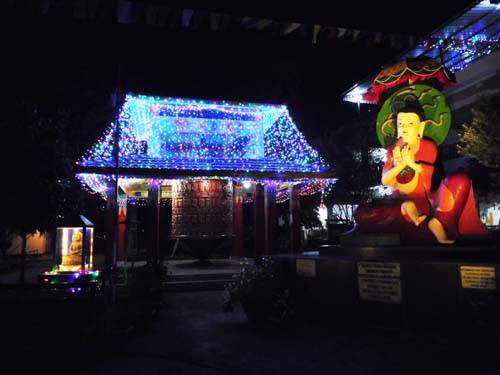

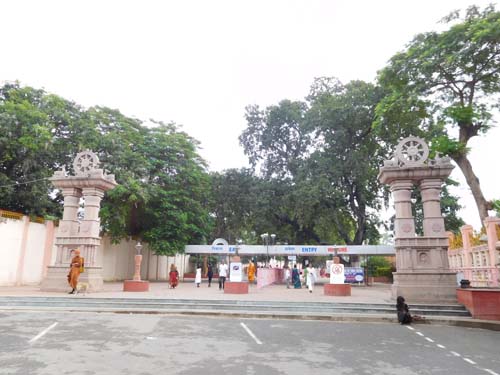











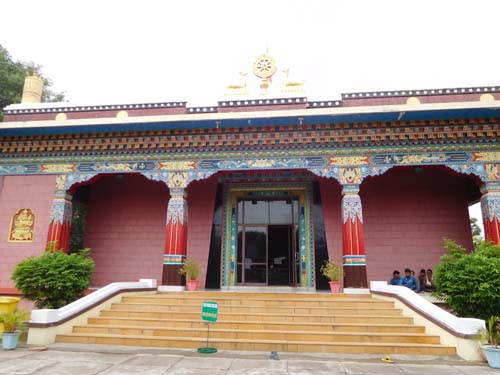


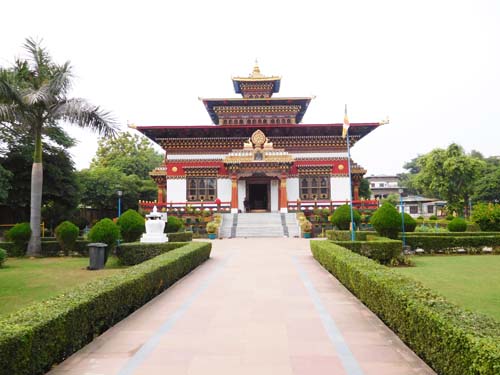


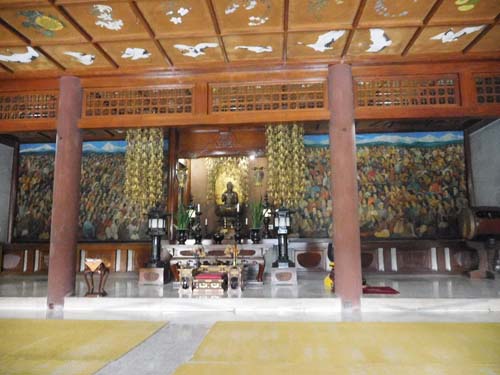


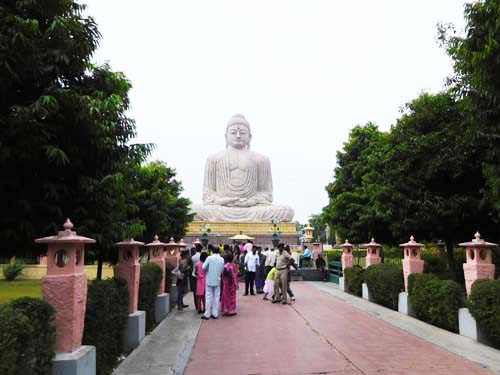
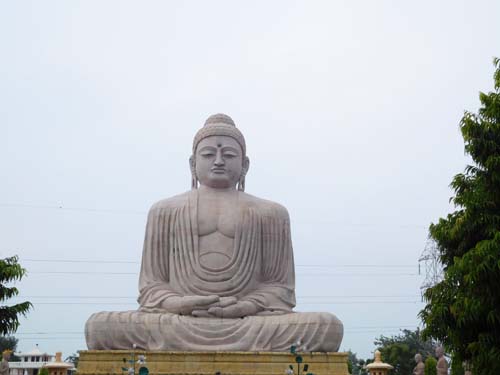


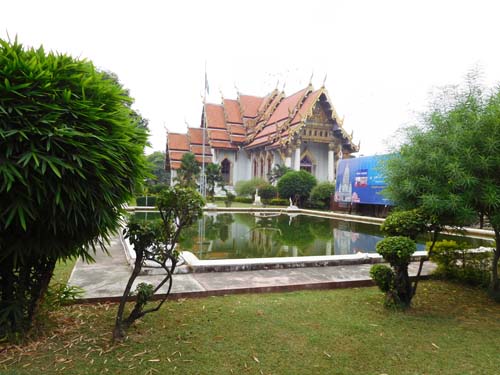






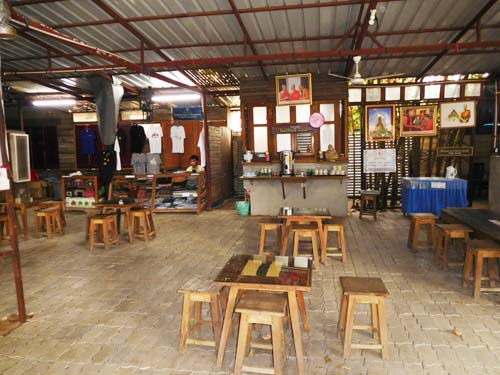
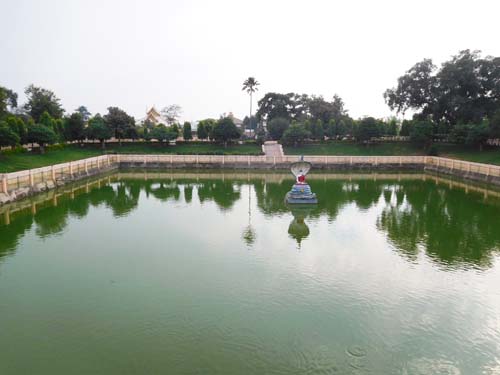




No comments:
Post a Comment